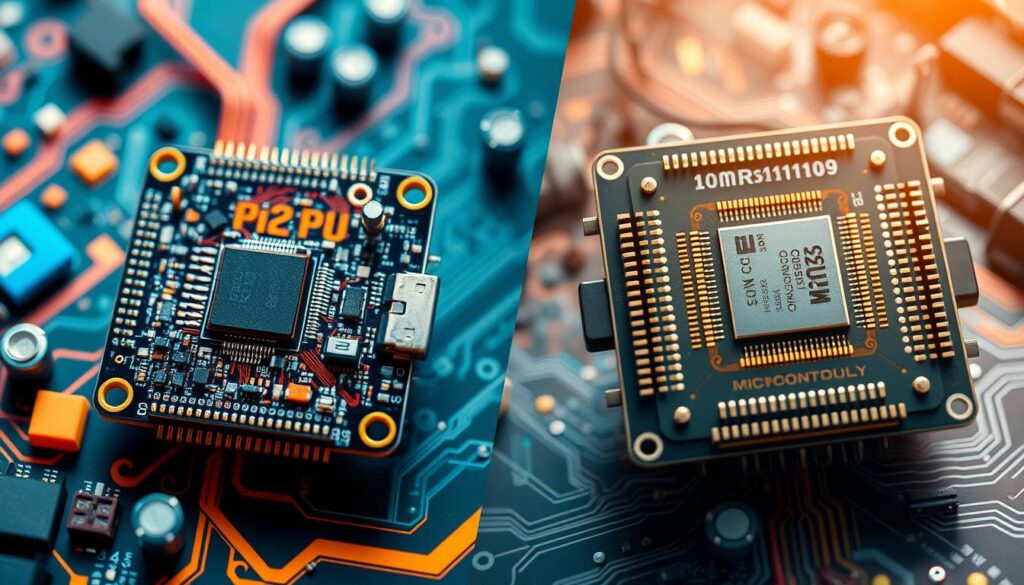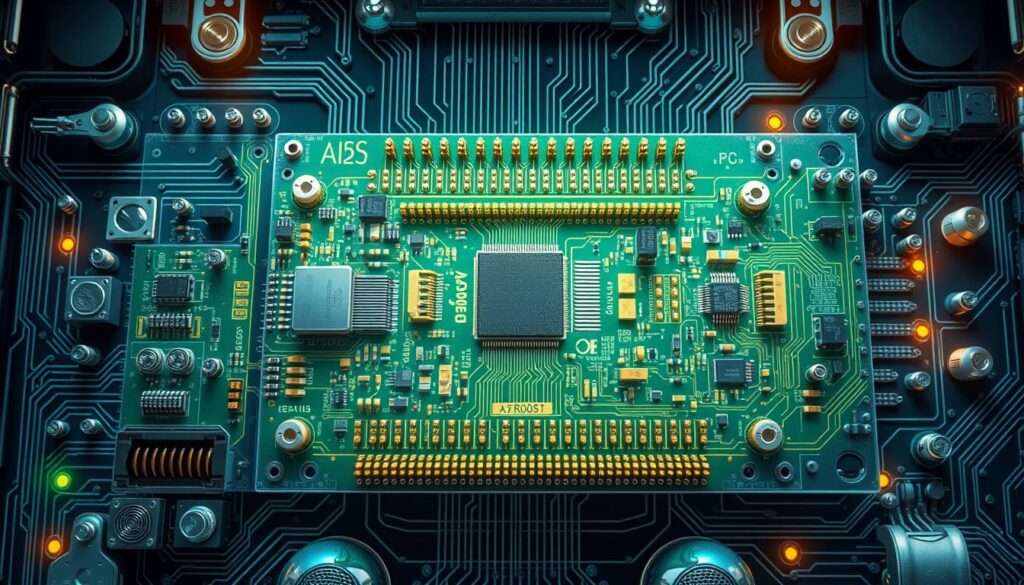Choosing the right processors and microcontrollers for home robots depends on several factors. These include performance needs, power use, cost, design complexity, and how well they work together. To pick the best part for a home robot project, you need to think about what the robot will do and what it needs to do it well.
Things like how fast it can process information, how much energy it uses, its price, and how it fits with other parts are important. This ensures the robot can handle tasks like moving on its own, learning, interacting with people, seeing its surroundings, and moving things around.
In the world of home robotics, picking the right processors and microcontrollers is key. Engineers must find a balance between strong computing power and the limits of cost, power use, and design. Now, thanks to more affordable and easy-to-use parts, hobbyists and DIY fans can dive into home robotics, embedded systems, and controlling robots.
Differentiating Microcontrollers and Processors
In the world of home robots, choosing the right processors and microcontrollers is key. These parts have unique designs and meet different needs. Knowing the difference between microcontrollers and processors helps make home robots better.
Microcontrollers: Integrated Solutions for Embedded Control
Microcontrollers are chips made for embedded systems. They have a CPU, memory, and peripherals all in one. They are great for tasks that need quick control and use less power.
They run at speeds from 1 to 50 MHz. This is enough for tasks like reading sensors and controlling parts. With 2KB of RAM and 32KB of flash memory, they are perfect for control-oriented tasks in home appliances and IoT devices.
Processors: Powerhouses for General-Purpose Computing
Processors are made for general-purpose computing. They have more computational power than microcontrollers. They run at speeds from hundreds of MHz to several GHz, making them good for complex tasks.
They need external memory like RAM, hard drives, or SSDs. This gives them more memory than microcontrollers. Processors also have more interfaces, like USB and Ethernet, for working with many devices.
The main difference between microcontrollers and processors is their design. Microcontrollers are for control-oriented tasks, while processors are for general-purpose computing. Choosing the right one is important for home robots.

Architectural Considerations
Choosing between microcontrollers and processors for home robots depends on their architecture. Knowing these differences helps pick the right part for a robot’s tasks.
Microcontroller Architecture: Microcontrollers have a simple design for control tasks. They combine the CPU, memory, and peripherals into one chip. This setup is great for tasks like controlling motors and managing sensors.
Processor Architecture: Processors, on the other hand, are made for general computing. They have a CPU and connect to memory and peripherals through buses. This design lets processors handle complex tasks and make decisions in robots.
| Feature | Microcontroller Architecture | Processor Architecture |
|---|---|---|
| CPU | Typically a single, integrated CPU | Dedicated CPU as the central component |
| Memory | Integrated on-chip memory | External memory connected through buses |
| Peripherals | Integrated on-chip peripherals | External peripherals connected through buses |
| Design Focus | Real-time control and efficiency | General-purpose computing and flexibility |
The architecture of microcontrollers and processors affects their use in home robots. It’s important to understand these differences when choosing parts for a robot.

Performance and Processing Power
The performance and processing power of microcontrollers and processors are key for home robots. Microcontrollers are great for tasks that need quick, real-time control. They are perfect for tasks like sensor monitoring and motor control, making them ideal for home robots.
Microcontrollers for Real-Time Control Tasks
Microcontrollers are made for handling real-time control tasks well. They have a special design that lets them quickly respond to sensor inputs. This makes them great for tasks that need fast and precise actions, like navigation and motor control.
Processors for Computation-Intensive Applications
Processors are better for tasks that need a lot of computing power. They can handle complex tasks like computer vision and natural language processing. This makes them perfect for creating smarter and more user-friendly home robots.
| Feature | Microcontrollers | Processors |
|---|---|---|
| Real-time control | Highly efficient | Moderately efficient |
| Computational power | Moderate | High |
| Multitasking | Limited | Extensive |
| Suitable applications | Sensor monitoring, motor control, data processing | Computer vision, natural language processing, advanced decision-making |
Choosing between microcontrollers and processors for home robots depends on what you need. It’s about finding the right balance between real-time control and computing power. Manufacturers must pick the best option for their robot’s performance and features.
Power Consumption and Efficiency
Choosing the right processors and microcontrollers is key for home robots. Microcontrollers are made to use little power, perfect for battery-powered devices. They have special designs and parts that help them work well with low power, making robots last longer and travel farther.
Microcontrollers for Low-Power and Energy-Efficient Designs
Microcontrollers are great for saving power and energy. They have special features that help them work efficiently. Here are some benefits of using them in home robots:
- They have power-saving modes like sleep and standby, which cut down power use when the robot is not busy.
- They have built-in parts like timers and communication tools that use little power, helping the main processor.
- Their design and memory help them run code fast and use less power.
- They can be chosen based on the robot’s needs, making them very energy-efficient.
Using microcontrollers helps make home robots last longer on a single charge. It also cuts down on the need for frequent recharging. This makes the robots better for the environment and saves money in the long run.
For home robots to be widely used and sustainable, saving power and energy is very important. By picking the best processors and microcontrollers, designers can make robots that are not only useful but also good for the planet and your wallet.
Cost and Design Complexity
The cost and design complexity of microcontrollers and processors are key in making home robots. Microcontrollers are cheaper and easier to design and program. This makes them perfect for projects with small budgets and high volume needs. Their simple design and tools like Arduino make the process smoother.
On the other hand, processors have more computing power but are more complex and expensive. This can be a challenge for some home robot projects. But, thanks to advancements in embedded systems, powerful processors are now more affordable. Basic models start at $20,000, and top models can go over $200,000 for robots with advanced sensors and processors.
The cost of a robot’s components, like actuators and mobility features, also matters a lot. Robots with advanced mobility can cost between $30,000 and over $150,000. Research and development humanoid robots can start at $100,000 and go over $500,000. This shows how their high-tech and custom features add to the cost.

